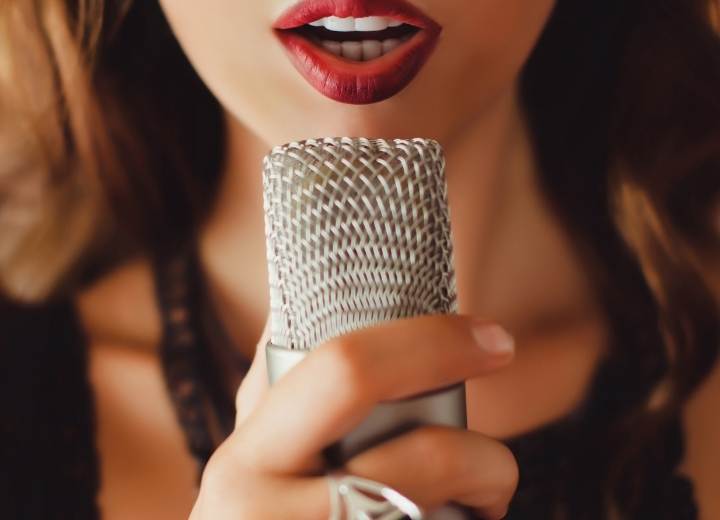
The sound effects of karaoke reverb vs echo are nearly identical. The term echo, on the other hand, is more common. It occurs when you hear a sound reflection back to one’s ear that is later and quieter than what you have just heard before.
The notion of reverb is similar to that of echo, but with a shorter reflection period. It frequently returns in a fraction of a second and combines with the sound that has not yet ended.
What Is A Reverb?
The phenomenon of reverberation is comparable to that of echo. Many people have misunderstood these two notions as the same thing. The reverberation results from numerous echoes colliding.
The reverberation leads to a reverb. This consequence isn’t a perfect match for the original track. If the original sample contains words, the reverb cannot detect those words. The use of reverb for distance measuring is impossible.
What Is An Echo?
Echo is a phenomenon that occurs when mechanical waves collide. The word “echo” is most commonly used in conjunction with sound waves. It may, however, describe various forms of waves, such as radio, ultrasounds, shock, and motor waves.

When the karaoke sound comes out within a big hall or other comparable building, the sound may bounce back off the walls. The echo is the sound thrown back. The echo’s intensity is always lower than that of the actual sound. By rebounding off the other wall, the echo might produce a double echo.
Echo and Reverberation As Sound Effects
Both reverb and echo are popular when it comes to special effects in karaoke performances. They provide texture and depth to sounds.
To get the same impression, you can utilize mobile devices that imitate the delayed sound. The delay, intensity level of the replayed sound, and playing times may all change on the devices.
To generate reverb effects in tracks, users often employ tape recorders first. This tool captures the original version on a tape loop to create echo patterns. Then, at an interval set by the loop’s duration, continue to play it.
What Is The Difference Between Echo and Reverb?
Check out the video below to learn more about the different features of Karaoke reverb vs Echo.
There are also some points that help you distinguish echo vs reverb as follows:
- An echo is a soundwave rebound from a distant surface. The rebound of the sound waves resulting from the combination of such echoes is the reverb.
- We can hear an echo when the distance between the sound source and the reflecting surface is about 50 feet or more. On the other hand, the sound creates the reverb when the reflecting surface is nearby.
- Due to the time and the distance the sound wave may travel, an echo is generally clear and easy to detect. In most cases, reverbs don’t have enough time or distance to travel. It indicates that they can stack up on top of each other, making it more difficult to perceive.
- Some people use the echo as a measurement for the distance of a reflecting surface. Everything gets easier if they know the humidity and temperature. Meanwhile, you cannot determine the distance with the reverb. Its travel time is not enough.
- Sound waves build up on top of one other in reverb, then reaching the listener at various rates. This feature makes it tough to grasp and recognize.
- The accumulation of soundwaves raises the sound energy in a space. This energy accumulation will ultimately stimulate the foundation and expand the space’s total volume.
- People often raise their voices to compensate for their difficulty to comprehend speech when there is reverb in the place.
- The reflections in a place can decrease if you add sound absorption. It also makes sound waves fade more rapidly. A tolerable fade time in public places should be shorter than 2 seconds.
Are Echo and Reverb Bad for Karaoke?
If not overused, a small portion of reverb or echo may undoubtedly give your karaoke live sound a more professional feel. They won’t make up for bad skills. Yet, they even give your voice a bit more power.

Echo and reverb can fill the sound from your vocals properly. They’ll add richness and sustain to the voices. Your voice will also sound more natural using these approaches.
However, there are other circumstances in which you may want to restrict the echo and reverb. These techniques will push the voices back into the mix. They also obliterate the words by overlapping them and washing them away.
How To Use Echo and Reverb To Improve Your Karaoke Performance?
Using echo and reverb can help improve your karaoke quality in some cases. Let’s have a closer look at them.
#1. Utilize a hardware device
This is probably the simplest method for adding an echo pattern to the microphone. All you should prepare is an echo device.
To connect the microphone to the outer echo hardware’s port, you’ll have to utilize a microphone wire.
The output of the echo device should then connect to the karaoke mixer. Amplifiers might potentially be necessary for the process. Make sure that you have plugged the connecting cable properly into the device’s input port.
A little preparation is enough. The hardware will then add some echo or even reverb to your voice.
#2. Use the sound mixer
Using a sound mixer with echo capabilities is another option to add echo and reverb effects to the mic. You’d need to utilize an analog mic, though.
You may connect your speakers to the system so that you can hear yourself perform in live time. You may then use the mixer to combine the echo effects with your voice before sending this out to the speakers.
How To Reduce Echo And Reverb?
Some karaoke singers don’t like the echo and reverb effects in their performance. Don’t worry! Here are some tips to reduce these effects.
#1. Hand textiles on your walls
To prevent echo, a huge canvas artwork or a fabric textile will offer little more sound absorption. Disrupting the potential of the sound to rebound and forth is easier by placing soft surface objects on parallel walls.
It’s not a good idea to hang the oil paint. When the paint dries, it might appear to be a hard surface, causing diffusion and reflection.
As a result, the softer the wall art, the finer. For this purpose, instead of drawings or pictures, you may try hanging a bright area rug or a beautiful blanket.
#2. Place some objects in the karaoke room
Echoes can get softened and dampened if you use a large bookshelf with a variety of sizes. It works by causing sound waves to bend about in the room, blurring and spreading sound. This dispersion effect gets better by stacking books at various levels on a bookcase. The books can then help soften the echoes.
#3. Use acoustic panels
Standard acoustic panels may be quite successful in minimizing sound rebound. Customers may pick the tool to enhance typically utilitarian-looking acoustic boards.
To save costs, you can try DIY solutions. Simply cut and insert the foam sheets within the back of hung paintings. The sheets are common since we often use them to pack things. You may find it easy to collect some around your home.
#4. Cover your windows
The thicker your window coverings are, the better for sound absorption. Instead of airy, try materials like velvets and robust kinds of cotton for draperies.
If all you have are blinds or shades, adding curtains may make a big difference.
If you just own curtains, try combining them with fabric or woven shades. They absorb more sound than metal or plastic samples.
Conclusion
Above is the comparison between karaoke reverb vs echo. They share something in common, which makes you confused. However, they still differ in terms of distance and time they reflect. As a result, you can recognize how they affect your voice while singing.
Hopefully, you can find a more suitable sound effect for your performance. If you need any further information, please feel free to ask.
Thank you for reading!
